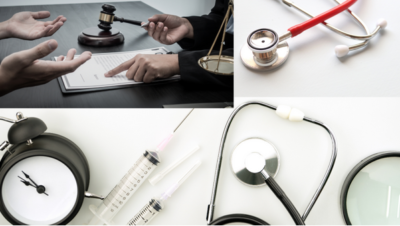Have you ever found yourself in a situation where someone suddenly collapses and stops breathing?
It’s a heart-wrenching experience! But knowing the proper CPR technique can make all the difference! You can reach out to the professionals from CPR Training in Hamilton On. to learn more about the proper CPR technique.
In this blog post, we’ll go over the steps of performing CPR correctly so that you’re prepared to save a life when it matters most. Read on to learn how to deliver effective chest compressions and rescue breaths using the proper CPR technique!
Table of Contents
Assess the Situation
The first step in performing CPR is to assess the situation. This involves checking the environment for any potential hazards. This includes electrical wires or dangerous chemicals.
It’s important to make sure that it’s safe for you and others around you before attempting to help someone in need.
Check Responsiveness
This crucial step can help determine if the person is conscious or not. To check for responsiveness, tap the person’s shoulder and shout to ask if he/she is okay. If there is no response, try shaking their shoulders gently.
If they still do not respond, it is important to assume that they are unconscious.
Call for Help
Call for help as soon as possible! Whether you are alone or have bystanders nearby, calling 911, or your local emergency number should be done immediately.
When making the call, provide clear information about your location and what has happened. Be sure to mention that CPR is being administered so that the dispatcher can instruct you on what to do next.
Begin Chest Compressions
To begin chest compressions, first, locate the victim’s sternum or breastbone. Place your dominant hand over the sternum with your other hand placed on top of it. Interlock your fingers together.
With straight arms and locked elbows, apply pressure downward onto the sternum using the weight of your upper body. Compress at least two inches deep into the chest cavity at a rate of 100-120 times per minute.
Maintain a consistent rhythm while administering chest compressions. Counting out loud can also help you stay on track and ensure that you are providing enough compressions per minute.
Remember to let each compression recoil completely before beginning another one. A good way to remember this is by imagining pushing down on a spring-loaded object.
Deliver Rescue Breaths
After performing 30 chest compressions, it’s time to deliver rescue breaths. This step is essential as it helps oxygenate the body and keep vital organs functioning. To perform rescue breathing properly, lift the chin with one hand to tilt the victim’s head back slightly and the other hand to pinch their nose shut.
Next, create a seal over their mouth with your mouth and blow into their lungs for about one second until you see their chest rise. Remember not to blow too hard or fast, as this can cause discomfort or even injury.
Take note that if youre uncomfortable giving mouth-to-mouth resuscitation, there are alternative techniques available such as using a barrier device like a pocket mask or bag-valve-mask (BVM) device.
If you are not sure about these techniques, you can equip yourself by taking on a CPR training program or checking out MyCPR NOW Group CPR Discounts to save a great deal.
Learn the Proper CPR Technique
CPR is an integral part of first aid. By following the proper CPR technique, which is easy to learn and can be done in a variety of situations, you can help save lives.
So get educated and perform perfect CPR to save a life. Start now by enrolling in a CPR certification course!
Visit our blog for more articles.









Comments on "How Does a Proper CPR Technique Work?" :